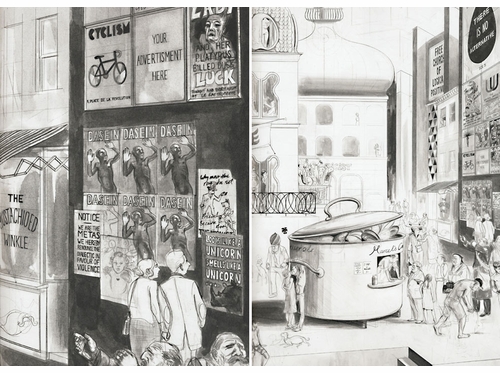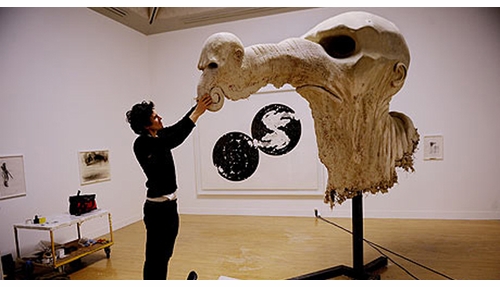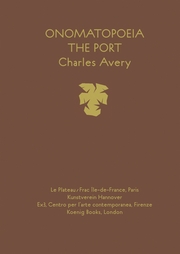ARTBOOK BLOGEventsStore NewsMuseum Stores of the MonthNew Title ReleasesStaff PicksImage GalleryBooks in the MediaExcerpts & EssaysArtbook InterviewsEx LibrisAt First SightThe Artbook 2023 Gift GuidesArtbook Featured Image ArchiveArtbook D.A.P. Events ArchiveDATE 11/1/2024 Celebrate Native American Heritage Month!DATE 10/27/2024 Denim deep diveDATE 10/26/2024 Join Artbook | D.A.P. at Shoppe Object High Point, 2024DATE 10/24/2024 Photorealism lives!DATE 10/21/2024 The must-have monograph on Yoshitomo NaraDATE 10/20/2024 'Mickalene Thomas: All About Love' opens at Philadelphia Museum of ArtDATE 10/17/2024 ‘Indigenous Histories’ is Back in Stock!DATE 10/16/2024 192 Books presents Glenn Ligon and James Hoff on 'Distinguishing Piss from Rain'DATE 10/15/2024 ‘Cyberpunk’ opens at the Academy Museum of Motion PicturesDATE 10/14/2024 Celebrate Indigenous artists across the spectrumDATE 10/10/2024 Textile as language in 'Sheila Hicks: Radical Vertical Inquiries'DATE 10/8/2024 Queer history, science-fiction and the occult in visionary, pulp-age Los AngelesDATE 10/6/2024 The Academy Museum comes on strong with 'Color in Motion: Chromatic Explorations of Cinema' | THOMAS EVANS | DATE 5/3/2011Charles Avery: Onomatopoeia (Walther König/Koenig Books, London, 2011)Of the many inspired curatorial concepts that Harald Szeemann devised in the course of his career, one of the most suggestive was “individual mythologies.” Szeemann debuted the term as the guiding thesis of the legendary Documenta 5, 1972; he later explicated it (in an interview with Hans Ulrich Obrist collected in the latter’s A Brief History of Curating) as “intense intentions that can take diverse shapes: people create their own sign systems, which take time to be deciphered.” Nebulously broad as this may sound, what Szeemann intended by “individual mythologies” was an art in which a unified system, or world view or cosmology manifests itself across a range of media—via a repertoire of signs and symbols, as in Marcel Broodthaers’ eagles, pipes and bricks, or Matt Mullican’s generic Isotype symbols; or through allegory, as in the cosmologies of William Blake, or Paul Thek, whom Szeemann included in the 1972 Individual Mythologies show. Such cosmologies would operate independently of existing religious, scientific and philosophical systems (though inevitably borrowing from them).The Island’s port is named Onomatopoeia, and this second volume in what Avery envisages as a multivolume encyclopedia on The Islanders gives a detailed rendering of what the local businesses and flyposter ads around the port of a philosophical allegory might look like:  “If the drawings are compelling, it is because of the sheer effort I got to and my earnest attempt to portray a place to the best of my abilities,” Avery told a recent interviewer. “It’s as though I have an intense conviction about how this place and its people look.” The Islanders differs from other artistic mythologies in which symbolism is often privileged over description, as Avery’s drawing skill takes the enterprise almost to the realm of the virtual in its illustrative zeal; perhaps it also helps obviate the hazard of author-centric solipsism particular to individual mythologies. With each new installment in the project, Avery throws open another vista onto a fresh corner or hinterland of his philosophical playground. |

